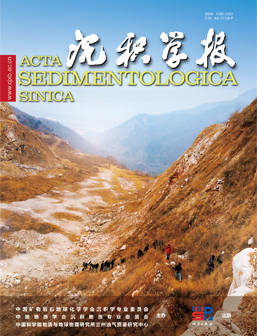Discussion on the comparative application of detrital zircon U-Pb dating for stratigraphic delineation --The "Taojinhe Formation" of the Neoproterozoic Fanjingshan Group as an Example
doi: 10.14027/j.issn.1000-0550.2024.062
- Received Date: 2024-03-04
- Available Online: 2024-07-12
-
Key words:
- Precambrian /
- detrital zircon /
- U-Pb dating /
- Fanjingshan Group /
- stratigraphic comparisons
Abstract: [Objective] The Precambrian stratigraphy has undergone multiple tectonic events, complex tectonics, severe deformation and metamorphism, making it inconvenient and difficult to compare the strata and establish an objective stratigraphic sequence. The article describes the Taojinhe Formation of the Neoproterozoic Fanjingshan Group in the western part of the Jiangnan Orogen as a research object, and use Pb age comparison of detrital zircon to provide new evidence for comparing the stratigraphy of the Fanjingshan Group. [Methods] Sandstone samples were collected feom the oldest outcrop of the "Taojinhe Formation" in the Fanjingshan Group for comparison of detrital zircon morphology, U-Pb dating, rock and mineral identification and analysis of the material origin and sedimentary geotectonic settings of this formation, as well as for multidimensional scaling analysis and comparison of the stratigraphy of the Fanjingshan Group. [Results] The sample rocks are mainly composed of detrital particles and fillers, the detrital particles are mainly quartz, feldspar and cutting, and the detrital particles are mostly sub-angular to sub-rounded with average sortability. The fillers are mainly mica, silica and iron and the mica is mainly sericite and white mica. The zircon grains of the "Taojinhe Formation" are angular, representing short-distance transport, and the source rocks are granite, diabase, Syenite/Monzonite, and basalt, with peak ages of 875 Ma, 1862 Ma and 2513 Ma. According to zircon geochemical data analysis, the "Taojinhe Formation" was deposited in a convergent background. U/Nb values of "Taojinhe Formation" zircon range from 25-700, 1 mantle-sourced zircon and 98 arc-sourced zircons, using U/Yb values to compare with Hf, all zircons were in the continental source range, and the Sc (average value 385.1) and Sc/Yb values ( average 1.1) also show island arc magmatic features. On the other hand, the zircons have high U/Nb, Sc/Yb and U/Yb values, relatively low Nb/Yb values and U/Nb > 20, suggesting that the zircons were formed in a subduction environment. In contrast, the zircons of the Yujiagou Formation are mostly elliptical, suggesting long-distance transport and deposition in a disseminated background, and the source rocks are granites, diorites, basalts, alkalites and rarely kimberlites, with two distinct age peaks at 1845 Ma and 2325 Ma. [Conclusions] The "Taojinhe Formation" and the Yujiagou Formation have different source rocks representing different material source areas, meanwhile the tectonic background is also different, and the maximum depositional age of the "Taojinhe Formation" is younger than that of the overlying Yujiagou Formation, which is not consistent with the stratigraphic sequences of the regional geological survey, so the original stratigraphic division may be erroneous. Comparison of zircon age diagrams shows that the Taojinhe Formation is similar to the Xiaojiahe Formation above the overlying Yujiagou Formation and has the same material source. Combined with the multidimensional scaling analysis and other stratigraphic features of the Fanjingshan Group, it is suggested that the "Taojinhe Formation" and the Xiaojiahe Formation in the Taoshulin area may be the same stratigraphic units, and the study shows that it is an effective method to compare the stratigraphic divisions by carrying out the zircon U-Pb chronology study for the Precambrian strata.
| Citation: | Discussion on the comparative application of detrital zircon U-Pb dating for stratigraphic delineation --The "Taojinhe Formation" of the Neoproterozoic Fanjingshan Group as an Example[J]. Acta Sedimentologica Sinica. doi: 10.14027/j.issn.1000-0550.2024.062 |






 DownLoad:
DownLoad: